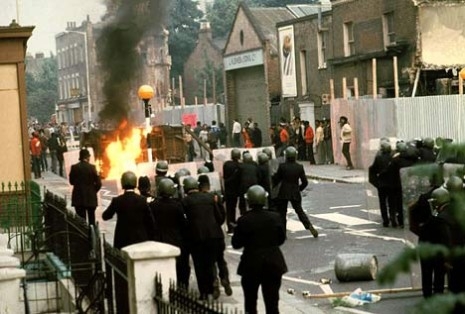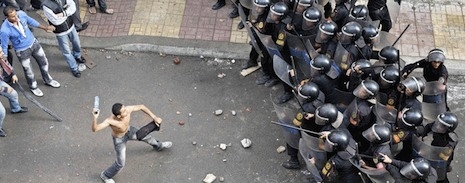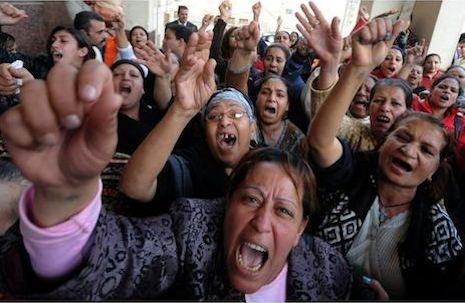
Thirty years ago today, the famous Brixton riot of spring 1981 brought the long-simmering issues of class, race and police repression to the front pages and TV screens of England.
Brixton was definitely not the first sign of racial unrest in the Thatcher era. A police raid on the Black & White Café in Bristol’s economically hard-hit St. Pauls district the year before had led to a day-long riot among Caribbean youth. And police apathy in investigating a fire at a party on New Cross Road in early ’81 fuelled the notion in South London’s black community that their lives were perceived by the cops as worthless.
In the days before things jumped off in Brixton’s Lambeth area on April 10, cops had launched the charmingly named Operation Swamp 81 in an attempt to curb local robbery and burglary. Over a week, officers stopped almost 1,000 mostly black people—including three members of the Lambeth Community Relations Council—and arrested 118.
Combined with the extremely high unemployment rate among Brixton’s sons and daughters of the Windrush generation of Caribbean immigrants, and the rise of organized white racist activism, the community’s temperature was at peak. As one of the youths put it in one of the films below: “Jobs, money, then National Front…something was bound to happen.” Confusion and bad-faith rumors around police involvement around a stabbing incident was all it took to set off two days of fighting.
The implications of the multiracial Brixton riot unfolded throughout the subsequent summer of that year in Handsworth, Chapletown and Toxteth. Despite the improvements and gentrification that Brixton has seen since ’81, the place hasn’t been free of unrest.
In 2001, director Rachel Currie produced The Battle for Brixton, one of the authoritative video chronicles of the revolt, for the First Edition program.
Part 2 | Part 3 | Part 4 | Part 5 | Part 6
After the jump: on-the-ground footage from community members, and Brixton’s impact on music.









